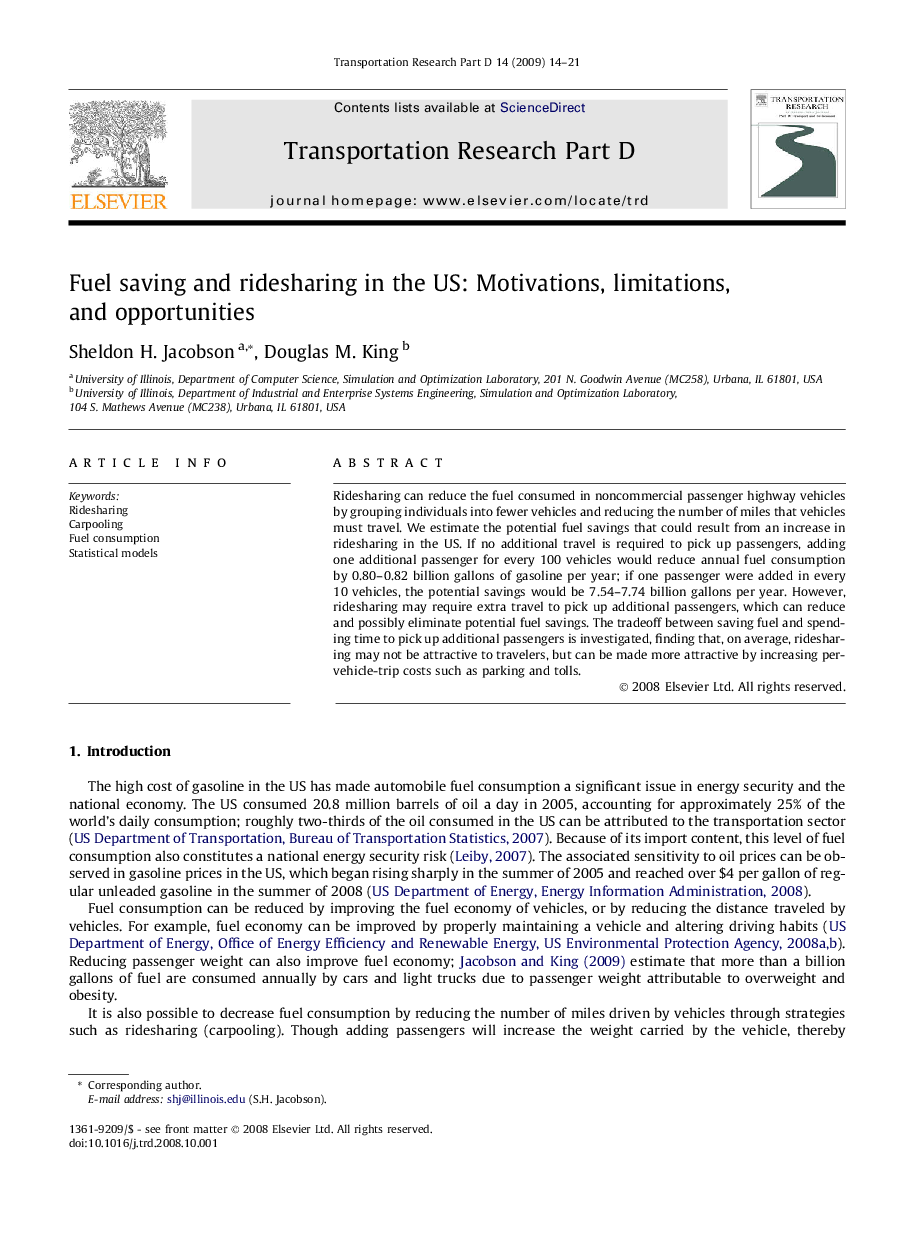| Article ID | Journal | Published Year | Pages | File Type |
|---|---|---|---|---|
| 1066510 | Transportation Research Part D: Transport and Environment | 2009 | 8 Pages |
Ridesharing can reduce the fuel consumed in noncommercial passenger highway vehicles by grouping individuals into fewer vehicles and reducing the number of miles that vehicles must travel. We estimate the potential fuel savings that could result from an increase in ridesharing in the US. If no additional travel is required to pick up passengers, adding one additional passenger for every 100 vehicles would reduce annual fuel consumption by 0.80–0.82 billion gallons of gasoline per year; if one passenger were added in every 10 vehicles, the potential savings would be 7.54–7.74 billion gallons per year. However, ridesharing may require extra travel to pick up additional passengers, which can reduce and possibly eliminate potential fuel savings. The tradeoff between saving fuel and spending time to pick up additional passengers is investigated, finding that, on average, ridesharing may not be attractive to travelers, but can be made more attractive by increasing per-vehicle-trip costs such as parking and tolls.
